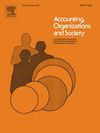董事会性别多样性、创新双元性与企业绩效
IF 4
2区 管理学
Q1 BUSINESS, FINANCE
引用次数: 0
摘要
我们假设董事会性别多样性使创新双重性得以实现,即同时追求创新效率和激进创新。基于上层梯队理论,我们认为行为、认知和社会因素会影响董事会性别多元化的公司的创新双元性。通过面板数据、文本分析和工具变量回归,我们发现董事会性别多样性与创新双元性的四项指标呈正相关。我们发现审慎实验和组织涓滴效应是董事会性别多样性对创新双元性影响的两种机制。适度中介模型通过审慎实验和涓滴效应表明,董事会性别多样性对创新双元性的影响(a)在女性董事具有更大监督责任的公司中较低,(b)在董事薪酬与长期目标挂钩的公司中较高。性别多元化董事会产生的创新对公司基本面有积极贡献,但被金融市场低估了。我们的研究对治理结构如何促进创新双元性和组织绩效提供了更深入的理解。本文章由计算机程序翻译,如有差异,请以英文原文为准。
Board gender diversity, innovation ambidexterity, and firm performance board gender diversity, innovation ambidexterity, and firm performance
We posit that board gender diversity enables innovation ambidexterity, defined as the simultaneous pursuit of innovation efficiency and radical innovation. Building on upper echelons theory, we argue that behavioral, cognitive, and social factors influence innovation ambidexterity in firms with gender-diverse boards. Using panel data, textual analysis, and instrumental variable regressions, we find that board gender diversity is positively associated with four measures of innovation ambidexterity. We identify prudent experimentation and organizational trickle-down effects as two mechanisms underlying the impact of board gender diversity on innovation ambidexterity. Moderated-mediation models show that the impact of board gender diversity on innovation ambidexterity via prudent experimentation and trickle-down effect is (a) lower in firms in which female directors have greater monitoring responsibilities, and (b) higher in firms in which directors’ compensation is tied to long-term goals. Innovations produced by gender-diverse boards contribute positively to firm fundamentals but are undervalued by financial markets. Our study provides a deeper understanding of how governance structures contribute to innovation ambidexterity and organizational performance.
求助全文
通过发布文献求助,成功后即可免费获取论文全文。
去求助
来源期刊

Accounting Organizations and Society
BUSINESS, FINANCE-
CiteScore
7.80
自引率
6.40%
发文量
38
期刊介绍:
Accounting, Organizations & Society is a major international journal concerned with all aspects of the relationship between accounting and human behaviour, organizational structures and processes, and the changing social and political environment of the enterprise.
 求助内容:
求助内容: 应助结果提醒方式:
应助结果提醒方式:


